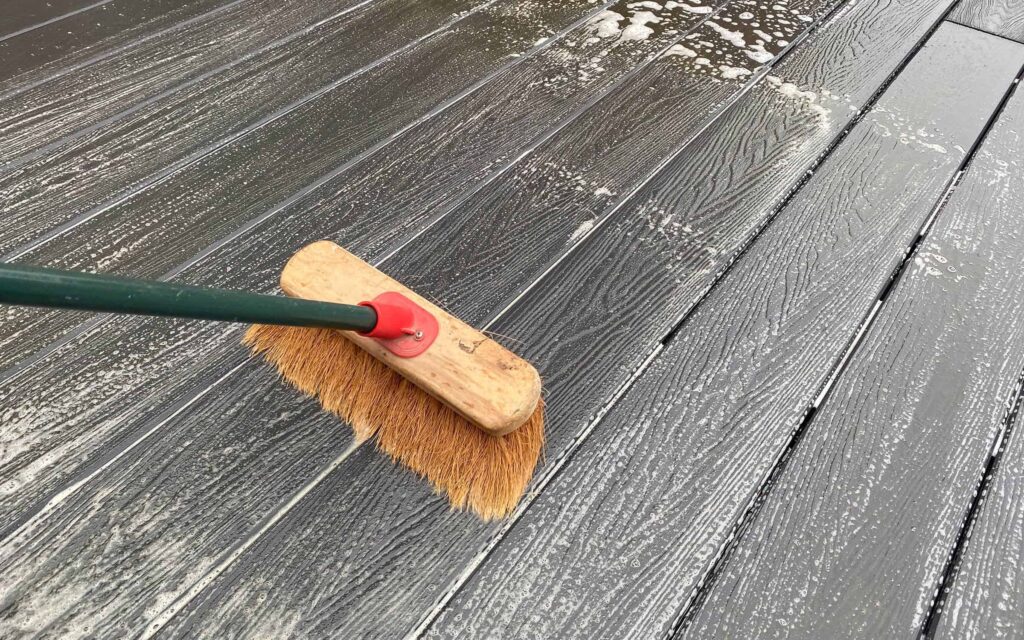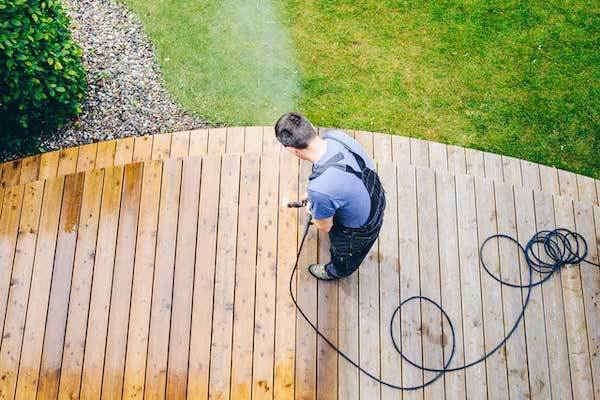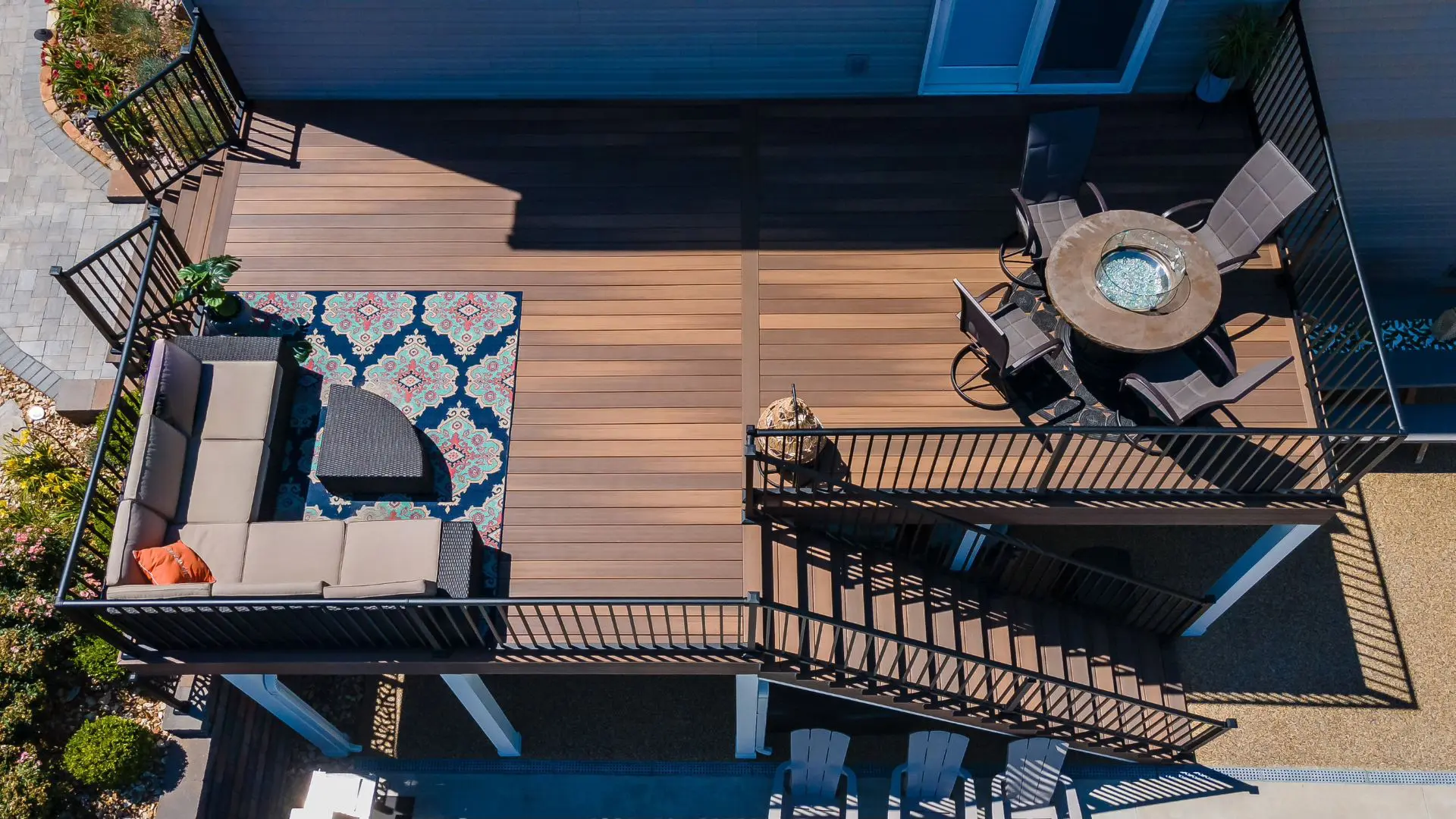The care a deck gets is what makes it look good. Even the strongest materials need regular care to stay clean, safe, and nice to look at. Cleaning too hard, not doing maintenance, or using the wrong products can all shorten the life of a deck without people meaning to.
The right way to do things is simple, consistent, and meant to protect the surface without hurting it. Cleaning and taking care of your deck, whether it’s made of composite, PVC, or pressure-treated wood, will keep it looking new and stop rot, stains, and structural problems.
Cleaning your deck not only makes it look nice, but it also protects the money you spent on your outdoor space.

Know Your Deck’s Material
Before you start cleaning, understand what your deck is made of. Composite and PVC decks are low-maintenance, while natural wood decks need more frequent care. Cleaning products that are safe for composite materials can damage wood, and vice versa.
For composite or PVC decking, use a mild soap and water solution. Avoid chlorine bleach or solvent-based cleaners. For wood decks, use a deck cleaner designed to remove mildew and prepare the surface for sealing or staining.
If you’re uncertain about the material you have, please examine the underside of a board or reach out to your builder. Using the wrong cleaner can strip protective coatings or discolor the surface.
How to Clean Composite or PVC Decks
Start by clearing the deck of furniture, planters, and rugs. Sweep away leaves and dirt to prevent scratches. Mix warm water with a gentle soap, like Dawn dish soap or composite cleaner, and apply it using a soft-bristle brush or deck brush. Scrub in the direction of the grain to loosen grime and rinse thoroughly with a garden hose. If you have hard water, it is recommended to get all the water off your deck by using a leaf blower.
Avoid pressure washing above 1500 PSI. Too much force can leave streaks or remove the outer cap that protects against fading. Brands like Deckorators and TimberTech recommend cleaning at least twice a year, ideally in spring and fall, to prevent buildup from pollen, dust, and organic debris.
Clean spills immediately if your deck is near grills or dining areas. Use a composite-safe degreaser or cleaner for oil-based stains and rinse well. This keeps the surface color uniform and prevents glossy or dull spots from forming over time.
How to Clean Wood Decks
Wood decks require deeper maintenance because the material is porous and more susceptible to moisture damage. Start by sweeping and removing debris between boards. Wet the surface, apply a wood-safe deck cleaner, and scrub with a stiff-bristle brush to remove mildew and stains.
After cleaning, rinse thoroughly and let the deck dry completely, at least 12 hours before applying a sealer or stain. A water-repellent sealer protects the wood from moisture, while UV-blocking stains help prevent fading and cracking.
If the wood has turned gray or uneven in color, sanding before sealing restores a smooth surface and enhances stain penetration. A sealed deck not only looks refreshed but also resists weather damage far longer than untreated wood.

Seasonal Maintenance Tips
The best time to do a deep clean is in the spring. Get rid of dirt, salt, and trash from the winter. Check the railing for movement and tighten any loose fasteners. In the summer, rinse it off every now and then to get rid of pollen and dirt, especially in areas that get a lot of shade or traffic.
Fall maintenance keeps stains and rot from happening. Before leaves break down and release tannins that leave brown marks on decking, sweep them up and wash them away. Don’t use metal shovels or rock salt in the winter. Use a plastic shovel or broom to clear the snow and keep the surface from getting scratched.
Avoid These Common Mistakes
Cleaning too much is one of the most common reasons things wear out too soon. Bleach-based cleaners, pressure washers, and wire brushes can all hurt wood and composite surfaces. Use only gentle soaps and soft brushes.
Another mistake is leaving trash out for months. Leaves, dirt, and other organic matter trap moisture, which can cause mold or discoloration. If you rinse your deck often, even between big cleanings, it will stop buildup from sticking to the surface.
Another thing that can cause problems is rugs and mats. Materials that don’t breathe hold moisture underneath and leave stains. Choose rugs that are made for the outdoors and have backing that lets air flow through them. Move them around from time to time to keep them from fading unevenly.
Maintain Structural Integrity
If the structure underneath is falling apart, a clean surface doesn’t mean much. Check the hardware, framing, and ledger connection at least once a year. Make sure that the flashing and joist tape are still in good shape, and tighten any loose screws.
Check for soft spots, sagging, or shifting that could mean there is hidden rot or water getting in. Taking care of these problems early on will save you thousands of dollars in repairs later on and keep your deck safe to use every day.
Preserve Longevity and Appearance
Give your outdoor space the care it needs so that it is ready for every season. Cleaning it a few times a year, keeping it dry, and checking the structure will keep the surface and frame strong for many years.
If your deck looks faded or neglected, professional maintenance can restore its appearance. Deep cleaning, resealing, or polishing for composite decks refreshes the surface without rebuilding. A small investment in annual upkeep extends your deck’s life and keeps it looking brand new.
Keep your outdoor space ready for every season by giving it the attention it deserves. For questions about deck care or to schedule a professional inspection, reach out anytime.



